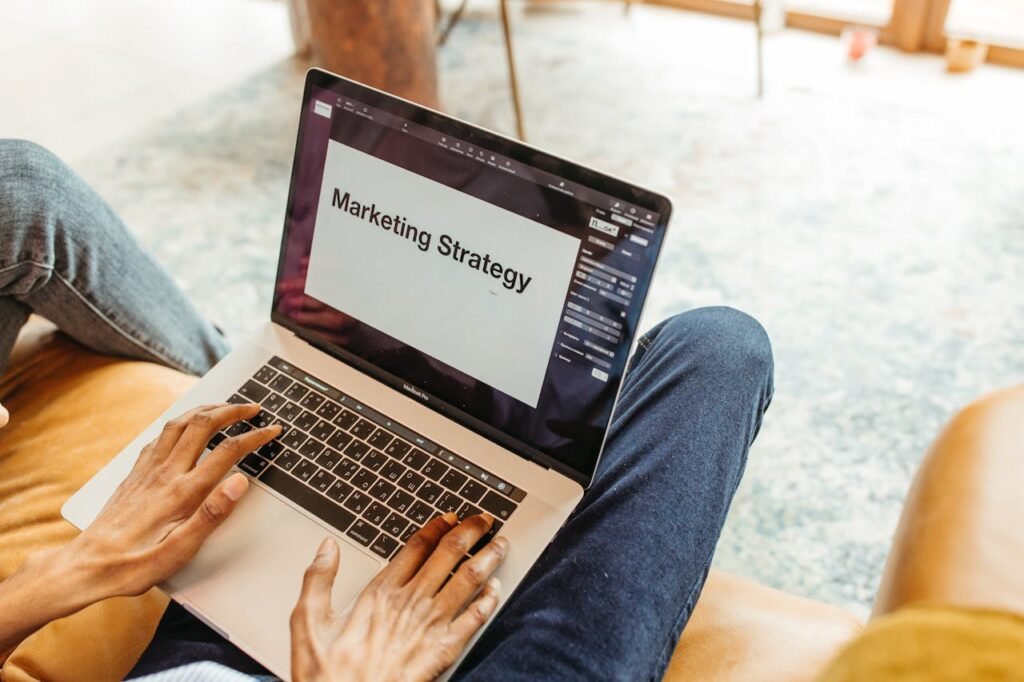In today’s fast-paced digital world, brands often chase the immediate visibility that paid social campaigns promise. With just a few clicks and the right budget, you can have ads plastered across platforms like Facebook, Instagram, and LinkedIn, reaching thousands of users in moments. But while paid social campaigns can bring quick attention, they’re also fleeting. When the ad budget dries up, so does the visibility.
If you’re aiming for sustainable growth, organic traffic deserves your attention. Building organic traffic takes time and effort, but the returns are lasting, bringing consistent visitors without the need to pay for each click or impression. Organic traffic offers credibility, trust, and long-term ROI, making it a powerful asset for any brand. Here’s why prioritizing organic traffic over paid social campaigns can fuel lasting success and how to do it right.
The Enduring Value of Organic Traffic
Organic Traffic Grows Over Time
Unlike paid ads, which stop driving traffic as soon as you pull the budget, organic traffic has a cumulative effect. When you create valuable, optimized content, it continues to draw visitors long after it’s published. A well-crafted blog post or optimized web page can generate steady traffic for months or even years, growing in value over time.
For example, let’s say you run a tech blog. By creating in-depth articles about common tech problems or product comparisons, your site gradually becomes a trusted resource. Search engines recognize the relevance of your content and rank it higher, bringing in a consistent flow of traffic. This “evergreen” nature of organic content is powerful, creating a stable source of visitors that paid ads can’t match.
Organic Traffic Builds Brand Credibility
Users tend to trust organic search results more than ads. When people find your website or content through a search engine, it feels more credible and authoritative than a sponsored link. High-ranking organic content gives the impression that your brand is knowledgeable and reliable. This trust is a major factor in customer decisions and can significantly improve conversion rates.
For instance, a health and wellness brand might publish detailed, science-backed articles on topics like nutrition, fitness, or mental health. When users find this content organically, they’re more likely to trust the brand’s products and recommendations. Building credibility through organic traffic creates a foundation of trust that no ad campaign can achieve.
The Cost Efficiency of Organic Traffic

Organic Efforts Have Long-Term ROI
While organic traffic may require an upfront investment of time and resources, the ROI grows significantly over time. Once your content ranks well, it can continue to drive visitors at no additional cost, reducing the need for constant ad spending. This is especially important for smaller brands with limited marketing budgets or companies looking for sustainable growth.
Take an e-commerce store specializing in eco-friendly products. By optimizing product pages, writing helpful blog content on eco-conscious living, and enhancing the website’s SEO, the store attracts consistent organic traffic. Every visitor gained organically is a potential sale without paying for a click, improving profit margins and keeping customer acquisition costs low.
Organic Traffic Lowers Dependency on Paid Campaigns
Relying solely on paid social campaigns creates a dependency that can become costly and unsustainable. Social media platforms frequently change algorithms and ad policies, affecting the cost and reach of your campaigns. Organic traffic reduces this reliance, providing a steady stream of visitors regardless of social media shifts. When organic efforts are prioritized, paid campaigns can become supplementary rather than a necessity.
For instance, if an online clothing store builds a strong base of organic traffic, it doesn’t need to pour money into paid ads to drive every sale. Instead, it can focus on high-value or seasonal campaigns to boost specific products, rather than spending heavily on general traffic acquisition.
How Organic Traffic Strengthens Customer Relationships
Organic Content Encourages Deeper Engagement
Organic traffic is often driven by valuable content that meets the audience’s needs, creating an opportunity for deeper engagement. When users visit your site organically, they’re often there because they’re genuinely interested in the content, product, or service. This leads to longer session times, more page views, and greater chances of conversion. Organic visitors are more likely to explore your offerings and return to your site, building a stronger connection over time.
Consider a financial services company that shares educational resources, like articles on budgeting or investing tips. When users find this content organically, they’re more likely to engage with it deeply, sign up for newsletters, or even explore the company’s services. This long-term engagement turns casual visitors into loyal customers.
Organic Efforts Foster Customer Loyalty
Organic traffic is rooted in genuine interest and trust, and these elements are crucial for customer loyalty. When users find your brand helpful and trustworthy, they’re more likely to become repeat visitors and eventually loyal customers. Organic content helps build a strong foundation of customer loyalty, creating relationships that last beyond a single transaction.
For example, a skincare brand that prioritizes organic content on skincare routines, ingredient education, and product benefits creates a resource customers return to regularly. These returning customers develop loyalty, recommending the brand to others. This loyalty grows from the brand’s willingness to educate and offer value rather than just sell.
Why SEO and Content Are Essential for Driving Organic Traffic
SEO Ensures Your Content Reaches the Right Audience
Search Engine Optimization (SEO) is the cornerstone of organic traffic. SEO ensures that your content is optimized to rank well in search engines, making it easier for people to find your brand. By targeting keywords that reflect user intent, you attract visitors who are actively looking for what you offer. This relevance improves the chances of conversion, as users are more likely to take action when they find exactly what they need.
Imagine a digital marketing agency creating content around keywords like “how to improve website traffic” or “SEO tips for small businesses.” By focusing on relevant keywords and optimizing each piece of content, the agency attracts visitors who are genuinely interested in marketing solutions. SEO helps them connect with potential clients, ensuring that organic traffic brings in high-quality leads.
Content Marketing Builds Authority and Keeps Users Engaged
Content marketing is a powerful tool for building authority and keeping users engaged with your brand. High-quality content doesn’t just attract visitors; it establishes your brand as an expert in your field. When people find valuable, informative content, they’re more likely to trust your brand, share your content, and return for more.
For instance, a software company specializing in project management tools might create in-depth articles on topics like team productivity, task organization, and remote work strategies. These resources help the company stand out as a go-to source of knowledge, building trust with potential clients and positioning the brand as an industry leader.
How Organic Traffic Adapts to Algorithm Changes

Organic Content Is Less Affected by Social Media Algorithm Changes
Social media platforms frequently update their algorithms, which can impact your reach and visibility. Paid ads can mitigate this somewhat, but the constant need to adjust campaigns can be time-consuming and costly. Organic traffic, especially through search engines, isn’t as vulnerable to these algorithm changes. By focusing on creating evergreen content that serves your audience’s needs, you reduce the risk of losing traffic due to social media updates.
For instance, a travel blog that ranks well on search engines with helpful guides and travel tips continues to attract visitors, regardless of changes in Instagram or Facebook algorithms. This stability gives the blog consistent visibility and frees the brand from the need to constantly adjust to social media trends.
Search Algorithms Prioritize Value and Relevance
Search engines like Google prioritize content that’s valuable and relevant, and they’ve become increasingly sophisticated at recognizing quality. This means that by creating content that meets your audience’s needs, you improve your chances of ranking well, even as search algorithms evolve. Unlike paid ads, where reach is influenced by budget, organic search rewards relevance and quality, which benefit both the brand and the user.
For example, an educational platform that regularly updates its content to match the latest learning methods and resources will likely maintain good rankings on search engines. This ongoing relevance keeps the platform visible to new users, ensuring that organic traffic remains strong over time.
Tactical Steps to Boost Organic Traffic
Start with a Comprehensive Keyword Strategy
Keyword research is foundational for attracting organic traffic. By understanding the phrases your audience uses to search, you can create content that matches their needs. Target both short-tail and long-tail keywords to capture different types of search intent. Long-tail keywords are especially effective, as they often bring in users who are ready to convert.
For example, a home decor store could target broad terms like “home decor ideas” while also focusing on specific phrases like “modern living room decor” or “budget-friendly decor tips.” This balanced strategy helps attract both general interest and specific buying intent, bringing in a diverse audience through organic search.
Prioritize High-Quality, Evergreen Content
Evergreen content is content that remains relevant and valuable over time. Unlike trendy topics, evergreen content continues to drive traffic because it addresses fundamental needs or questions. When you create evergreen content, you’re investing in resources that will serve your brand’s visibility for months or even years.
Imagine a fitness website that publishes detailed guides on workout routines, meal planning, and wellness tips. These topics remain relevant over time, allowing the website to attract steady organic traffic. As users return for reliable information, the site builds a loyal following that strengthens the brand’s visibility.

Related: Check out our free tools:

Optimize for User Experience (UX)
User experience plays a major role in organic traffic, as search engines favor websites that are easy to navigate, mobile-friendly, and fast-loading. Make sure your website offers a seamless experience for visitors, with intuitive navigation, quick load times, and accessible design. A positive user experience keeps visitors on your site longer, which boosts your SEO rankings and improves engagement.
For instance, an eCommerce store with fast page load times, easy-to-find product categories, and a smooth checkout process will likely see higher engagement and conversion rates. As users spend more time on the site and explore multiple pages, search engines interpret this as a sign of quality, improving the store’s rankings and organic traffic.
Build a Community Around Your Brand
Organic traffic doesn’t just bring visitors; it builds a loyal community around your brand. When users discover your brand organically through content, they’re often more engaged and interested in what you offer. This audience isn’t just there for a quick visit—they’re there to learn, connect, and even share their experiences with others. By creating content that encourages discussion, interaction, and connection, you’re building a network of engaged users who return to your site time and again.
For example, a cooking website might create recipe guides, cooking tips, and meal-planning advice that invite readers to share their own experiences or favorite variations. By encouraging comments, questions, and user-generated content, the site builds a sense of community that extends beyond individual sessions. This engaged community becomes a powerful source of sustained organic traffic and brand loyalty.
Make Organic Content the Foundation of Your Marketing Strategy
Paid social campaigns can be an excellent way to amplify your efforts, but they work best when they’re built on a strong foundation of organic content. Think of organic content as the cornerstone of your marketing strategy—high-quality blog posts, videos, and resources that form a consistent base of value for your audience. Once you have this foundation, you can use paid campaigns to boost visibility, bringing new eyes to an already strong content lineup.
For instance, a financial planning company could create a series of detailed articles on budgeting, retirement savings, and investment basics. These articles establish the company as a trusted authority in personal finance. When the company runs paid ads, they’re not just attracting clicks; they’re introducing users to a resource-rich site where they’re likely to return and engage. This approach means that paid efforts are more effective, building on an existing base of organic content that continues to drive traffic and engagement.
Foster Trust and Credibility Through Consistent Organic Efforts
One of the most powerful aspects of organic traffic is the trust and credibility it creates for your brand. When users encounter your content naturally—whether through search engines, recommendations, or direct visits—they see your brand as a trusted source. Over time, this credibility builds loyalty and encourages users to return, knowing they can rely on your content for value and accuracy.
Imagine a health and wellness brand that consistently publishes research-backed articles on nutrition, exercise, and mental well-being. As users find this content organically and see its quality, they begin to associate the brand with expertise and reliability. This ongoing trust becomes invaluable, as users are more likely to buy products or services from a brand they trust.
Converting Organic Traffic into Leads and Customers

Guide Visitors with Clear Calls-to-Action
Organic traffic brings users to your site, but it’s up to you to guide them toward conversion. Thoughtfully placed calls-to-action (CTAs) help direct visitors to take the next step, whether it’s signing up for a newsletter, downloading a resource, or making a purchase. CTAs should be clear, relevant, and strategically positioned to align with the user’s journey, increasing the chances of conversion.
For example, a B2B software company might offer a free trial CTA at the end of an educational blog post about productivity tools. Visitors who have read the post are likely interested in the topic, making them prime candidates for a free trial. By aligning CTAs with user intent, the brand increases its chances of converting organic traffic into qualified leads.
Use Lead Magnets to Capture Emails and Build Relationships
A lead magnet is a valuable piece of content or resource that you offer in exchange for a visitor’s email address. Lead magnets allow you to turn organic traffic into a list of contacts you can nurture over time, building relationships that lead to conversion. Examples of effective lead magnets include downloadable guides, templates, webinars, and exclusive content.
For instance, an online business consultancy could offer a free downloadable checklist for startup planning. Visitors who access this checklist have already shown interest in business resources, making them potential leads. By capturing their email, the brand can follow up with relevant resources, increasing the likelihood of converting these visitors into clients.
Nurture Organic Leads with Targeted Email Campaigns
Once you’ve captured leads, use targeted email campaigns to nurture these relationships and move them down the conversion funnel. Email allows you to share tailored content, offers, and updates with users who have already shown interest in your brand. This personalized approach keeps your brand top-of-mind and helps convert leads from organic traffic into loyal customers.
For example, a digital marketing agency might send a monthly email featuring new SEO tips, case studies, and exclusive offers to subscribers who signed up through the blog. By providing ongoing value through email, the agency keeps subscribers engaged, making it more likely that they’ll reach out for consulting services when needed.
Measuring the Impact of Organic Traffic on Business Growth

Track Key Performance Metrics
To understand the impact of organic traffic, monitor key performance metrics that reveal how visitors engage with your site and whether they’re converting. Metrics like organic traffic volume, bounce rate, average session duration, and conversion rate provide insights into the quality and impact of your organic traffic.
For instance, an eCommerce site might notice that visitors who arrive through organic search have longer session durations and higher conversion rates than those from paid ads. This data shows that organic traffic isn’t just driving numbers but attracting high-intent visitors, reinforcing the value of investing in organic strategies.
Use Attribution Modeling to Assess Organic Contributions
Attribution modeling helps you understand the role that organic traffic plays in the larger customer journey. Not every visitor will convert immediately, but organic traffic often serves as a vital touchpoint in building familiarity and interest. Attribution modeling allows you to see how organic visits contribute to overall conversions, providing a clearer picture of their impact.
For example, a subscription-based education platform might see that many users first interact with the brand through organic blog visits. While they may not subscribe immediately, they return through direct or referral channels later to complete the purchase. Attribution modeling highlights this path, helping the brand understand the role of organic traffic in conversion.
Adjust and Optimize Your Organic Strategy Based on Data
Data-driven adjustments are essential for maximizing the impact of organic traffic. Regularly analyze your metrics to identify what’s working, which content performs best, and where there are opportunities for improvement. By refining your strategy based on data, you can continue to improve the quality of your organic traffic and increase conversions.
For instance, a SaaS company might find that certain blog topics drive significantly more engagement and conversions. By focusing on creating similar content or updating existing high-performing pages, the company can increase its organic traffic and conversion rates, making its strategy even more effective over time.
The Bottom Line: Prioritizing Organic Traffic for Long-Term Success
Organic traffic is more than a complement to paid social campaigns—it’s a strategic investment in your brand’s future. While social media campaigns offer instant visibility, organic traffic builds a steady foundation that grows over time, driving consistent engagement, trust, and conversions without the ongoing cost of paid ads.
By focusing on SEO, creating valuable content, and optimizing user experience, your brand can attract high-quality traffic that’s deeply engaged and genuinely interested. In a digital landscape that’s always shifting, organic traffic provides stability and resilience, positioning your brand for long-term success.
Building organic traffic takes time and commitment, but the results are enduring. Prioritizing organic strategies over quick, temporary gains ensures that your brand remains visible, trusted, and relevant. As your organic traffic grows, so does your brand’s influence, setting you up for sustainable growth that paid social campaigns alone can’t deliver.
READ NEXT:
- Are Vanity Metrics Killing Your Marketing Efficiency? Here’s What to Track Instead
- Pinpointing Digital Marketing ROI: Why Your Metrics Aren’t Telling the Full Story
- Unlocking Real ROI in Digital Marketing: The Hidden Costs Draining Your Budget
- How Misaligned Marketing Funnels Are Blocking Your ROI Potential
- Best Digital Marketing Agency In Santa Ana, California
- Best Digital Marketing Agency In San Francisco, California





















